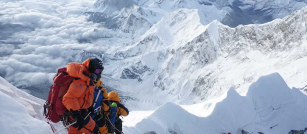
Image Source: Pixabay
Long-distance hiking offers incredible opportunities to explore nature, build endurance, and achieve personal goals. However, you can only achieve those rewards and reduce frustration by planning well.
Hikers must consider everything from gear selection to physical conditioning. To help you get the most out of your adventure, this article explores some essential tips for preparing for long-distance hiking.
1. Plan Your Route Meticulously
Successful long-distance hikes start with thorough route planning. So, before the big day, research your chosen trail in detail, identifying key landmarks, water sources, and potential hazards.
For instance, if you’re tackling the West Highland Way Walk in Scotland, familiarize yourself with its unique challenges, such as unpredictable weather and remote stretches. You could also bookmark campsites and check the availability of resupply points before your journey.
Essential tools you might need for route planning include topographical maps, GPS devices, and reliable navigation apps. You can also consult experienced hikers and local guides with first-hand knowledge of the trail you plan to explore.
2. Choose the Right Gear
After identifying and planning your route, select the right gear. Hiking entails long hours on rough terrain, so prioritize quality and comfort over cost.
Ideally, go for well-fitted hiking boots that offer support and protection. A reliable backpack with adjustable straps and ample storage for essentials like food, water, and emergency supplies is also crucial.
Moreover, look for moisture-wicking clothing layers that adapt to varying weather conditions and a durable, lightweight tent if you’re camping. Remember to test your gear before the hike to avoid unexpected issues on the trail.
3. Train Physically and Mentally
Physical and mental preparation are also vital to long-distance hiking success. Therefore, start a fitness regimen focusing on building endurance and strength.
You could Incorporate regular hikes with a loaded backpack to simulate actual trail conditions. Gradually increase the distance and difficulty of your training hikes, paying attention to elevation gain and uneven surfaces.
Besides physical readiness, prepare mentally for challenges like fatigue, bad weather, or navigation issues. Mindfulness activities such as meditation can help develop resilience against these stresses.
4. Optimize Nutrition and Hydration
Hikes consume substantial energy, so it’s crucial to fuel your body properly. Before setting off, research nutritional needs specific to long-distance hiking.
It is best to pack high-energy snacks like nuts and dried fruits for quick boosts on the trail. For meals, lightweight options such as dehydrated or freeze-dried foods can provide balanced nutrition without adding extra weight.
Hydration is also significant in maintaining stamina and health. So, carry a hydration system like a CamelBak or water bottles that are easy to access during your hike.
5. Prepare Emergency Kits
Lastly, prepare for unexpected situations with a well-stocked emergency kit. Being proactive can mean the difference between minor inconveniences and major setbacks.
Your kit should include basic first-aid supplies like bandages, antiseptic wipes, and pain relievers. Also, pack essential items such as a multi-tool, fire starter, whistle, and thermal blanket to handle various emergencies.
You might consider adding personal medications and extra batteries for your GPS or flashlight. If you will be going into remote areas, have a personal locator beacon (PLB) or satellite messenger, as cell phone network coverage can be unreliable.
Wrapping Up
With careful preparation, you’ll tackle any long-distance hiking confidently and safely. Gear up, train hard, and stay mindful of your surroundings. Moreover, embrace the journey and let nature’s wonders unfold with every step.
Remember, never travel without travel insurance! And never overpay for travel insurance!
I use HeyMondo. You get INSTANT quotes. Super cheap, they actually pay out, AND they cover almost everywhere, where most insurance companies don't (even places like Central African Republic etc!). You can sign-up here. PS You even get 5% off if you use MY LINK! You can even sign up if you're already overseas and traveling, pretty cool.
Also, if you want to start a blog...I CAN HELP YOU!
Also, if you want to start a blog, and start to change your life, I'd love to help you! Email me on johnny@onestep4ward.com. In the meantime, check out my super easy blog post on how to start a travel blog in under 30 minutes, here! And if you just want to get cracking, use BlueHost at a discount, through me.
Also, (if you're like me, and awful with tech-stuff) email me and my team can get a blog up and running for you, designed and everything, for $699 - email johnny@onestep4ward.com to get started.
Do you work remotely? Are you a digital nomad/blogger etc? You need to be insured too.
I use SafetyWing for my digital nomad insurance. It covers me while I live overseas. It's just $10 a week, and it's amazing! No upfront fees, you just pay week by week, and you can sign up just for a week if you want, then switch it off and on whenever. You can read my review here, and you can sign-up here!













 As you know, blogging changed my life. I left Ireland broke, with no plan, with just a one-way ticket to Thailand
and no money. Since then, I started a blog, then a digital media company, I've made
more than $1,500,000 USD, bought 4 properties and visited (almost) every country in the world. And I did it all from my laptop as I
travel the world and live my dream. I talk about how I did it, and how you can do it too, in my COMPLETELY FREE
Ebook, all 20,000
words or so. Just finish the process by putting in your email below and I'll mail it right out to you immediately. No spam ever too, I promise!
As you know, blogging changed my life. I left Ireland broke, with no plan, with just a one-way ticket to Thailand
and no money. Since then, I started a blog, then a digital media company, I've made
more than $1,500,000 USD, bought 4 properties and visited (almost) every country in the world. And I did it all from my laptop as I
travel the world and live my dream. I talk about how I did it, and how you can do it too, in my COMPLETELY FREE
Ebook, all 20,000
words or so. Just finish the process by putting in your email below and I'll mail it right out to you immediately. No spam ever too, I promise!
